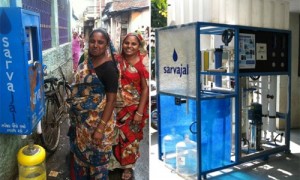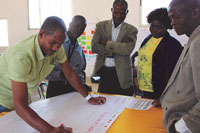Open innovation as a new paradigm for global collaborations in health. Globalization and Health 2013, 9:41.
Patricia Dandonoli
Open innovation, which refers to combining internal and external ideas and internal and external paths to market in order to achieve advances in processes or technologies, is an attractive paradigm for structuring collaborations between developed and developing country entities and people. Such open innovation collaborations can be designed to foster true cocreation among partners in rich and poor settings, thereby breaking down hierarchies and creating greater impact and value for each partner.
Using an example from Concern Worldwide’s Innovations for Maternal, Newborn & Child Health initiative, this commentary describes an early-stage pilot project built around open innovation in a low resource setting, which puts communities at the center of a process involving a wide range of partners and expertise, and considers how it could be adapted and make more impactful and sustainable by extending the collaboration to include developed country partners.








